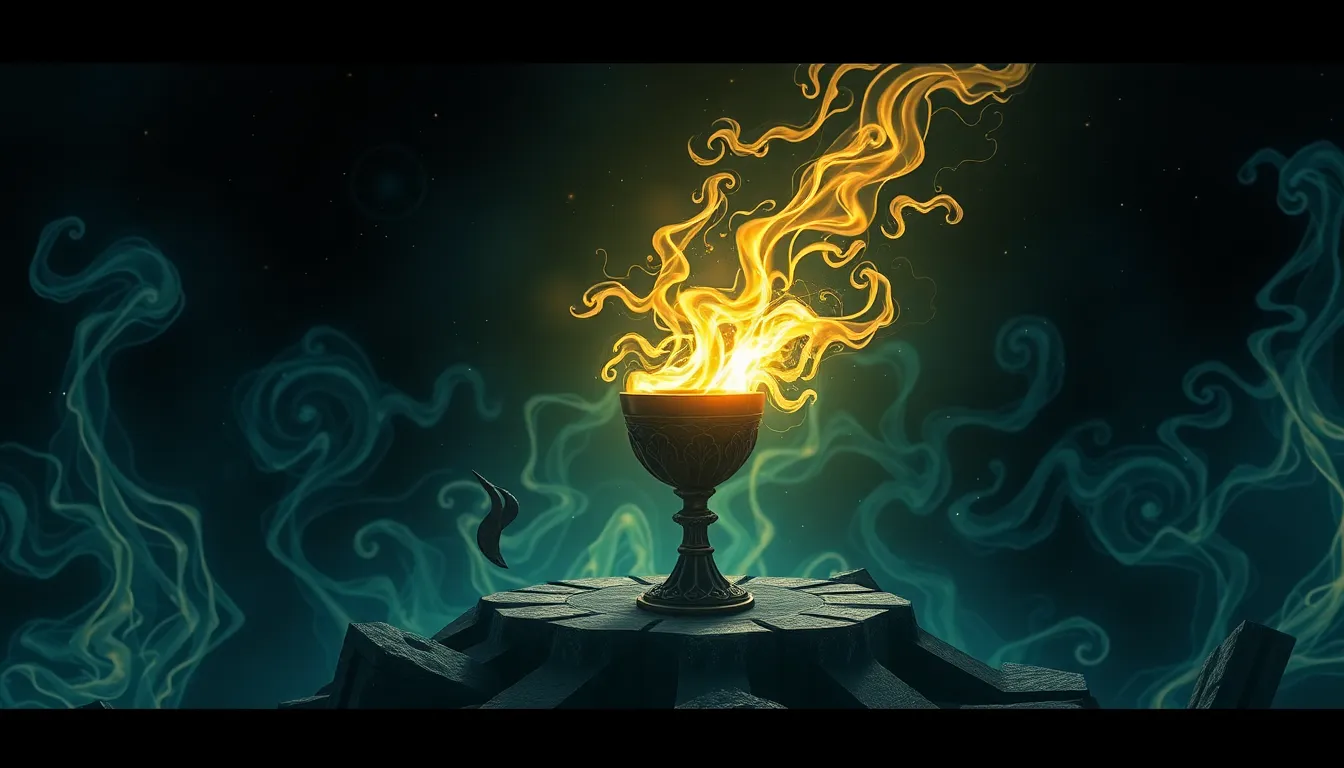The Chalice of Destiny: Drinking from Fate’s Cup
I. Introduction
The concept of the Chalice of Destiny represents a profound metaphor in understanding the intricate relationship between choice, consequence, and the overarching forces of fate. It implies that each individual is faced with a metaphorical chalice filled with the essence of their potential paths, decisions, and destinies.
Throughout human experience, the notions of fate and destiny have been central to our understanding of life’s unpredictability. They evoke questions about the extent to which our lives are predetermined versus the influence of our free will. This article aims to explore the significance of the Chalice of Destiny, delving into its historical context, symbolism, personal narratives, and its representation across cultures.
II. Historical Context of Destiny and Fate
Ancient civilizations had varied perspectives on fate, often personifying it through deities or mythological figures. For example:
- The Fates in Greek mythology, who controlled the thread of life.
- Norns in Norse mythology, who determined the destiny of gods and men.
- The concept of Karma in Hinduism, which denotes the moral law of cause and effect.
The chalice has been a potent symbol in many myths, representing the choices one must make and the consequences that arise from those choices. In literature, the theme of destiny is prevalent in works such as:
- Shakespeare’s “Macbeth,” where ambition and fate intertwine.
- Homer’s “The Iliad,” where the fates of heroes are predetermined.
- Dante’s “Divine Comedy,” illustrating the journey of the soul towards destiny.
III. The Symbolism of the Chalice
The chalice serves as a powerful metaphor for the choices we face in life. Each sip represents a decision, with the potential for both joy and sorrow. The chalice symbolizes:
- Choices: Every choice made can lead to a different outcome.
- Consequences: Drinking from the chalice can lead to both blessings and burdens.
From a spiritual perspective, drinking from the chalice signifies acceptance and the embrace of one’s life journey. In religious contexts, the chalice is often associated with:
- The Holy Grail, representing divine grace and the search for enlightenment.
- The cup used in rituals, symbolizing sacrifice and communion.
IV. The Intersection of Free Will and Destiny
The philosophical debate surrounding free will versus determinism is timeless. Some argue that our choices shape our destinies, while others believe that our paths are predetermined. The chalice can represent a balance between these two concepts, illustrating that:
- While we have the power to make choices, those choices can lead us down paths influenced by fate.
- Accepting our fate does not negate our ability to make proactive decisions.
Case studies of individuals grappling with their destinies often reveal a rich tapestry of choices influenced by circumstances, desires, and the inexorable pull of fate.
V. The Personal Journey of Drinking from the Chalice
Personal narratives of transformation often highlight the significance of drinking from the chalice of destiny. Individuals recount moments where they faced pivotal choices that altered their life paths. Key aspects include:
- The role of intuition: Many describe moments of gut feeling that guided their decisions.
- Embracing one’s path: Recognizing that every choice is part of a broader journey towards self-discovery.
This journey of self-acceptance and understanding can lead to profound personal growth and resilience.
VI. The Role of Myth and Storytelling
Myths featuring the chalice often carry lessons about human experiences and the nature of destiny. For example:
- The Arthurian legends highlight the quest for the Holy Grail, representing the pursuit of one’s higher purpose.
- Modern retellings, such as films and novels, continue to explore themes of choice and consequence.
Storytelling plays a crucial role in shaping our understanding of fate, allowing us to explore complex themes through relatable characters and scenarios.
VII. The Chalice in Modern Psychology
The psychological implications of fate and choice are significant, impacting how individuals perceive their circumstances. In therapeutic practices, the concept of destiny can be explored through:
- Acceptance: Helping individuals understand and accept their life paths.
- Empowerment: Encouraging proactive choices while recognizing the limits of control.
Case studies illustrate how individuals can heal through the acceptance of their unique journeys, leading to a sense of peace and purpose.
VIII. Cultural Representations of the Chalice
The chalice appears in various cultural representations, including:
- Art: Artists depict the chalice as a symbol of hope and aspiration.
- Film: Cinematic narratives explore characters’ relationships with their fate.
- Literature: Writers use the chalice to symbolize the complexity of human choices.
Different cultures interpret the act of drinking from fate’s cup through the lenses of their unique beliefs and values, imbuing the chalice with varied meanings.
IX. Lessons from the Chalice of Destiny
In conclusion, the Chalice of Destiny offers several key takeaways about life:
- Embrace your fate while recognizing the power of choice.
- Develop resilience in the face of life’s uncertainties.
- Encourage proactive decisions while accepting the unpredictability of the journey.
X. Conclusion
In summation, the Chalice of Destiny serves as a potent metaphor for exploring the interplay between choice and fate. By understanding its significance, we can navigate our lives with greater awareness and intention, ultimately leading to a richer, more fulfilling existence.




